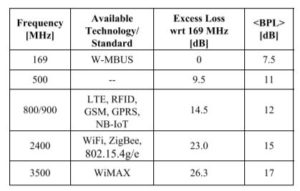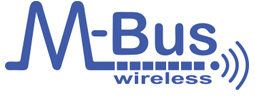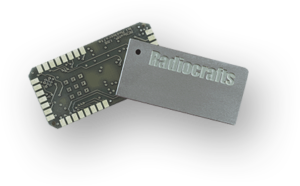Range, when you have a good line of sight is one thing, but, how efficient is a technology when you have several obstacles such as building walls in the way? Many RF technologies today are unable to work efficiently in dense urban areas. This is a problem that has been present in the radio world long before the IoT was created.
Therefore, in this blog post we will discuss the growth of Smart cities and how this is creating a need for better RF technologies with better penetration, using smart metering as an example. Then, we will touch base with the 169 MHz frequency band which is a great solution to reach indoor objects compared to higher frequencies. We will also talk about Radiocrafts’ involvement in creating a standardized process for the 169 MHz band, and, the Wize Alliance, a nonprofit association founded in 2017 by SUEZ, Sagemcom, and GRDF, who are growing rapidly (over 40 members now) due to their extensive efforts in creating a smart metering solution known as Wize.
Smart City Problems and Solutions:
In our modern world today, cities are growing rapidly, infrastructure is improving, knowledge is flourishing and spreading across the globe, and us humans are multiplying like rabbits. While major cities such as London, Tokyo, and New York are growing at a slow rate of 0.5% per year, many African and South Asian cities are experiencing a surge of growth of up to 5-10% per year.[1] With the urbanization process we are seeing more and more clustered buildings and large and chaotic dense urban areas.
Just to give you an idea of how dense some urban areas are, Tokyo, has a population density of 15,600 per square mile. With this large increase in city growth, maintaining a certain standard of living becomes more difficult as you need to spend more money to improve infrastructure. This includes improving transportation, healthcare, supply of goods and resources, and more.
These solutions typically rely on strong technology support which is made up of devices spread throughout the city, together with managing and controlling communication networks and the related applications to improve the general efficiency of large cities. These devices help us create what is called a Smart City. As the years go by, our need for effective use of energy and natural resources is leading to a tremendous growth in smart meter deployment, which can contribute to manage gas, energy, and water distribution and consumption more effectively than traditional water meters. Many experts claim that by 2020, almost 72% of European consumers will have a smart meter for electricity, while 40% will have one for gas. Additionally, China is expected to have 377 million installed smart meters by 2020. Smart meters provide more information than traditional meters, by means of electronic communication.
International standards for smart metering are yet to be defined today, and this is creating a problem as it is preventing the quick mass development of wireless metering services. Experts in the field are aiming to identify cost-effective network layouts in specific frequency bands in order to contribute towards a standardized process. One highly studied frequency band to solve the issue is the 169 MHz frequency band, due to its better performance in terms of building penetration and the possibility to extend to different frequency ranges.
169 MHz Frequency Range and its many benefits:
Compared to other frequency bands available today, the 169 MHz band allows for good performance in terms of coverage, building penetration, and consumption of battery, while still ensuring a sufficient bitrate. This is important in applications such as smart metering where these meters are often stored in basements or in metal cabinets where propagation conditions are poor. The measure to quantify building penetration is known as “Building Penetration Loss (BPL)”. The most important radio characteristic is the wavelength, where a long wavelength will penetrate objects best, and a short one will slip through openings best. Many experts have done experiments in this field which have been picked up by various different authors and are illustrated in this IEEE document.
Table 1 in this document shows the free space excess loss for different frequencies with respect to 169 MHz, together with the related mean value of the Building Penetration Loss. As you can see, the increasing propagation loss with frequency impacts network performance. Additionally, this effect would be even stronger if we measured the propagation in a real environment instead of in an ideal free space condition.[2]
Other benefits of using the 169 MHz frequency band include:
· Longer range due to lower frequency
· Improved communication reliability due to the improved link margin
· Improved reliability due to less use and less interference in the frequency band.
Radiocrafts’ involvement in the standardization process of 169 MHz radio solutions:
Radiocrafts has been a pioneer in the standardization and development of radio solutions in the 169 MHz band with several thousand modules already deployed.
Radiocrafts already provides a range of products based on Wireless M-Bus at 169 MHz:
· RC1701HP—MBUS4, the modem module which supports the N-mode
· RC1701HP-MPC1, the modem module with pulse counter, tamper, and install inputs
· RC1701HP-MSM, the sensor interface module with integrated sensor interfaces.
· RC1701HP-Wize, a novel approach to a wireless LPWAN network for Industrial IoT applications based on Wireless M-Bus at 169 MHz.
These Radiocrafts modules are designed to be able to communicate with hard to reach objects (in a basement or underground). Features include:
· Designed for robust and professional operation
· 2-way communication
· Built on the robust Wireless M-Bus protocol
· Up to 1000 sensors/control units per gateway
· Maximum range to the most remote sensor is up to 5km
· Supports battery operation
· Predictable delays for near time control systems
· And more.
Radiocrafts can also assist in design of 169 MHz equipment, we have a long experience in antenna and power management designs needed for a successful design project.
To learn more about the 169 MHz frequency band, please read our white paper 011 here.
To learn more about our Wireless M-Bus products please find our datasheets and user manuals here or visit our Wireless M-Bus product page here.
To learn about antenna tuning and how to make an optimal antenna design, please read our application note 025 here.
The RC1701HP-Wize is especially interesting because it is the very first module being released by the Wize Alliance. But what is the Wize Alliance?
Wize Alliance:
As mentioned previously, the Wize Alliance is an association founded by SUEZ, GRDF, and Sagemcom to secure the durability and sustainability of the 169 MHz technology used in the water and gas smart metering network in France. The aim is to export the technology and enter new markets outside utility metering, particularly smart meter applications.
Additional goals for the Wize Alliance include:
· Improving interoperability between connected objects using LPWAN technologies
· Educate the IoT market
· Create an ecosystem of start-ups, developers, and product suppliers
· Contribute to the development of the Wireless M-Bus standard.
Radiocrafts joined the Wize Alliance as one of the first members and is now part of a growing, 40+ member association. Radiocrafts is also preparing the launch the first ever module with WIZE Protocol, the RC1701HP-Wize.
The Wize protocol is a long range, low power, and bi-directional radio communication that operates in the 169 MHz frequency. It is a result of the development of a new LPWAN solution based on Wireless M-Bus mode N at 169 MHz. Wize was specifically designed to connect hard-to-reach objects and to ensure deployments on a territory-wide scale for the city’s uses, which require integration in a constrained environment: metering, public lighting, energy management of builds and etc. The technology was first developed for gas and water metering in France, but now, this technology is being made available for a wider market outside of France and is no longer limited to smart metering. Smart city and Industrial IoT applications are now available for Wize such as waste management.
The Wize protocol provides:
· Robust communication and wide area coverage using VHF frequency
· Secure transfer of data in terms of privacy, data integrity, and authentication
· A low power battery operated solution with a lifetime of more than 15 years
· A proven solution based on the Wireless M-Bus standard
· Firmware over-the-air updates as an integral part of the protocol
· Power efficient 2-way communication protocol for sensor reading and control
Additionally, on a territory-wide scale, deployment of the network is simple and fast because the technology requires little equipment (a communicating object and a concentrator). No repeater system, no pairing or complex programming sensors are required.
It has very good performance in range, penetration, and special redundancy, which have been confirmed in the framework of large-scale field deployments, making it possible to minimize the number of equipment and therefore high points to accommodate them. Since the device has a battery lifetime of up to 20 years and a minimum amount of equipment needed in the system, this proves to be a low maintenance technology, helping you save money.
To read more about the Wize alliance please visit their website here.
To read more about the Wize protocol please read our white paper number 016 here, or, visit our Wize product page here.
What to take away from this?
What you should take away from this blog post is that as the years goes by, we need to be continuously finding new and sustainable solutions to combat our daily challenges, such as, maintaining a good living standard in highly dense urban areas. Various technology solutions are being examined, tested, and invented in order to improve our daily lives. One specific frequency band being examined is the 169 MHz band which is incredible for applications such as smart cities, industrial IoT, and smart metering, which require long range, low power, connectivity for hard to reach objects, and more. There are several associations and groups around the world such as Wize Alliance and CEN TC294 who are on a quest to develop sustainable solutions for the 169 MHz frequency band. Radiocrafts is a part of both of these groups and as a result of this, have several products which support the 169 MHz frequency band, including the new Wize Protocol which will take the world by storm.
So, what is your opinion on the 169 MHz frequency band? What do you think of these initiatives such as Wize Alliance? Do you disagree with any of the statements we have made? Use the comment section below to start a discussion, ask questions, or just to give feedback and say hi. Radiocrafts or another blog reader will answer!
[1] https://www.worldatlas.com/articles/the-fastest-growing-cities-in-the-world.html
[2] https://ieeexplore.ieee.org/stamp/stamp.jsp?arnumber=7904646









